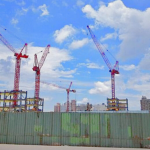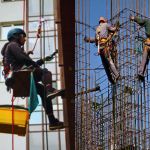
In this article, you will get to know the different types of hard hat color codes used and the meaning of the hard hat color code.
What Is Hard Hat?
Hard hats are one of the most important and necessary accessories used on construction sites worldwide. Hard hats are designed to protect the worker’s head from any type of injury. Construction sites are prone to a variety of accidents that can cause significant damage to the workers.
The Principle of Hard Hat Color Coding
The Hard Hat Color Code, or color-coding system, is intended to make workplaces safer by assisting workers in identifying potential hazards and ensuring their workplace safety. Many industries require hard hats, and the colors of hard hats can help workers stay aware of their surroundings. Different types of hazards have different color codes, and each color represents a different level of danger.
Why Are Hard Hats Important?
Hard hats are important to protect workers from potential hazards. Hard helmets are required by law in many industries, and the colors of hard hats can aid workers in maintaining awareness of their surroundings. Workers must be familiar with the meaning of each color code because there are different color codes for different types of hazards. Many workplace accidents occur on construction sites, affecting both male and female workers, and we can mitigate the severity of the hazards by wearing safety helmets or hard hats. As a result, it’s also important to know the helmet colors.
Purpose of Hard Hat Color Code
The purpose of the safety hard hat color codes is to guide workers in identifying potential hazards. In several industries, hard helmets are mandated by law, and the colors of hard hats can aid workers in maintaining awareness of their surroundings. There are different color codes for various kinds of hazards, so it’s important to know what each color implies.
Various colors typically have different meanings on different work sites, so it’s important to ask your supervisor or safety coordinator what the colors indicate on your particular jobsite.
Also read: Personal Protective Equipment
Classification of Hard Hat
There are primarily four classes of hard hats.
- Class A
- Class B
- Class C
- Class D
Class A: General Services with Limited Voltage Resistance
- Class A safety helmets are resistant to high voltage and have limited resistance for general services.
- This type of hard hat provides impact and penetration resistance as well as voltage protection. It protects against voltages of up to 2200 volts.
- Class A helmet shells are water-resistant and slow-burning.
- Class A safety helmets should not have more than 5% of the shell’s water absorption after a 24-hour immersion test.
- Class A safety helmets should be tested with leakage currents up to 2.2 kV for 3 minutes. It shouldn’t exist at 9 mA.
Class B: High Voltage Resistance
- Class B safety helmets provide the highest level of protection against electrical hazards, shocks, and burns.
- Class B safety helmets should be both slow-burning and water-resistant.
- Class B safety helmets also provide protection against impact and penetration hazards from falling objects.
Class C: No Voltage Protection
- Class C safety helmets are also called metallic helmets or bump caps.
- It is designed for use in areas with low head clearance.
- Classic C helmets are not intended to provide protection from electrical hazards or falling objects.
- Class C safety helmets are typically recommended for areas where head bump protection is required.
Class D: Protection for Fire Fighting
- A Class D safety helmet is fire-resistant and electrically nonconductive.
- Class D safety helmets are designed specifically for firefighting.
- Water absorption in class D safety helmets should not exceed 5%.
Different Hard Hat Color Codes and Their Meanings
Depending on the type of work being performed at the given location, there are predefined standard hard hat color codes that must be followed.
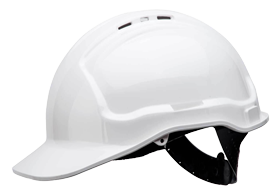
White Hard Hat
White hard hats or white helmets are commonly considered to be symbols of authority when it comes to workplace safety. White hard hats provide protection from falling objects and debris and are used by site managers, foremen, engineers, and supervisors. In hot weather, they also help to keep your head cool. White hats can be used in various places where there is a risk of head injuries, even though they are most often associated with construction sites. Consider wearing a white hard hat if you work in an environment where head injuries are possible.
Green Hard Hats
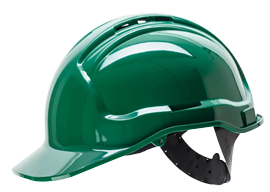
Green hard hats are most typically associated with safety since they indicate that no safety hazards exist. On the jobsite, safety inspectors, officers, or managers typically wear green hard hats or helmets. Green hard hats may occasionally be required of new hires or employees with minimal experience. By doing this, they make it easy for others to recognize them and provide support or direction if necessary. In addition to keeping you safe, wearing a green hard hat might let others know that you might need extra assistance or direction. Thus, if you see someone wearing a green hard hat, don’t be hesitant to offer your assistance!
Red Hard Hats
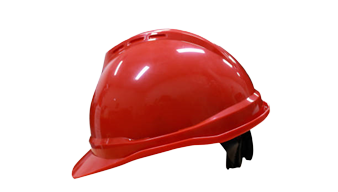
Fire Marshals typically wear red hard hats with “Fire Marshal” stickers. This is to indicate their authority on the site and to protect them from any falling objects. As a result of their extensive knowledge of fire safety, firefighters frequently make the joke that their red hats are “filled with brains!” Know that a fire marshal in a red hard hat is there to keep everyone safe when you see one. Always pay attention to their directions and leave right away if they say to do so. Your life might depend on it!
Yellow Hard Hats
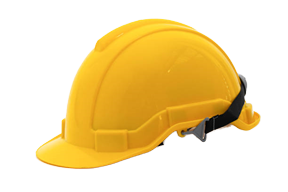
Yellow hard hats are commonly worn by construction workers and earth moving operators because they are easily visible from a distance. Workers can avoid head injuries and improve their visibility by wearing a yellow hard hat. Many construction sites require workers to wear hard hats, and doing so can help assure their safety.
Orange Hard Hats
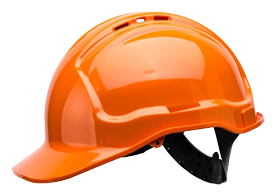
Orange hard hats are usually worn by lifting operatives, bank-man slingers/ signalers, or traffic marshals. This allows the crane operator to distinguish them from other workers. Crane operators are required to wear an orange hard hat for safety reasons. This allows the crane operator to see them more easily and avoid any accidents.
Brown Hard Hats

A brown hard hat is a form of headgear worn by welders and other workers in high-temperature environments. To shield the head from dust, sparks, and heat, it’s frequently made of durable materials like metal or leather. Brown hard hats frequently have reflective stripes or other safety features to help to ensure that workers are visible to other road users. This makes them very visible in work environments. When working in extreme heat or near possible hazards, workers should always wear brown hard hats as part of their safety equipment.
Blue Hard Hats
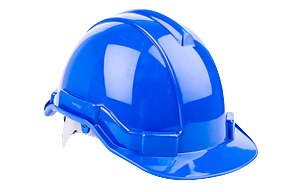
Blue hard hats or blue safety helmets are commonly worn by technical operators, electricians, and other workers who operate with live electrical cables as a precautionary measure. The wearing of blue hard hats acts as a global warning to stay away from the potentially dangerous area. Although wearing a blue hard hat is not required, it is strongly advised as a safety measure. If you come into contact with live electrical wires, a blue hard hat can help protect you from severe harm or even death.
Black Hard Hats
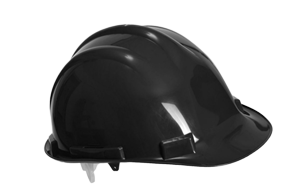
Black hard hats are generally worn by workers who work in hot environments, as they help absorb heat and keep the worker’s head cool. Hard hats are made of a variety of materials, including plastic, fiberglass, and metal. Many workplaces, including construction sites, factories, and mines, require them to be worn.
Pink Hard Hats
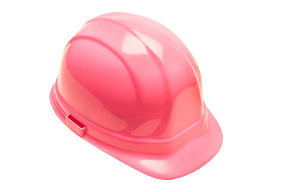
On construction sites, women frequently wear pink hard hats. In some instances, males who want to support breast cancer awareness may also choose to wear them. A pink hard hat can be worn to show support for individuals who are battling the illness and to spread awareness of the issue. Nevertheless, pink hard hats aren’t just for show. They are also important in terms of safety. Hard hats are a crucial piece of safety gear on construction sites since they are made to shield the wearer from potential head injuries. Women can demonstrate their commitment to safety and willingness to take reasonable care to protect themselves by wearing a pink hard hat.
Gray Hard Hats
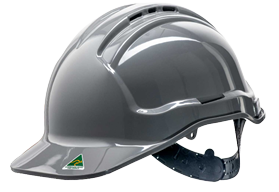
Gray hard hats are safety helmets worn by workers or general laborers who work around high-voltage electrical devices and wiring. The hard hats help avoid burns and electrical shocks for the workers. In order to protect themselves from the same dangers, site visitors also wear gray hard helmets.
Reflective Hard Hats
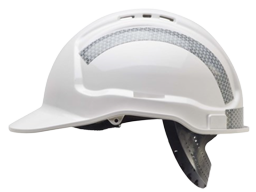
Reflective hard hats are required for a wide range of occupations, including those in the railroad, utility, and construction industries. Reflective hard hats make these workers more visible to approaching traffic or other workers in low-light conditions. On the job site, wearing a luminous hard hat helps reduce the risk of accidents and injuries.
Hard Hats with Face Shields
Hard hats with face shields are frequently worn by workers who need to be protected from flying items or chemicals. Face shields add another layer of defense against potential dangers, and they are particularly crucial in workplaces where there is a chance of coming into contact with hazardous chemicals or other substances. Using a face shield can also help protect the wearer’s face from dangerous UV rays.
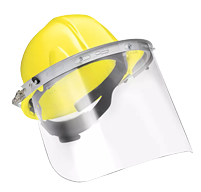
Hard Hats with Ear Protection
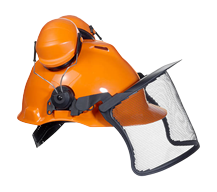
Workers who must be protected from loud noise levels wear hard hats with ear protection. Construction workers, factory employees, and anyone else who works in a noisy environment may fall into this category. The danger of hearing loss and other issues brought on by exposure to high noise can be decreased with the help of hard hats with specially designed ear protection.



